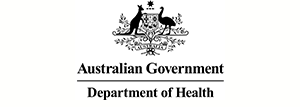Modelling the costs of obesity from adolescence to adulthood

Status current
Start Date
Estimated End Date
There is evidence that intervening in early childhood could slow the progression of obesity through later life, however, it is hard to know the best time to intervene to obtain value for money.
This PhD project will measure the effectiveness and cost-effectiveness of obesity interventions in childhood through simulation modelling for governments and society.
Introduction
Our PhD candidate, Joe Carello, will use new data to extend an existing model from adolescence into early adulthood, up to the age of 20. The model will help predict direct and indirect healthcare costs attributed to early childhood obesity and look at the costs to government of increased healthcare, and costs to society from illness, lost productivity and absenteeism.
Featured project news
-
The role of e-health interventions in treating adolescent overweight and obesity
News Category: Prevention Centre NewsDate -
World Obesity Day – Everybody needs to act
News Category: Prevention Centre NewsDate -
Systems in communities and child obesity: two new PhD projects
News Category: Prevention Centre NewsDate
About
Health economics and life course modelling of obesity from adolescence into adulthood
Project titleWhat is the issue?
There is evidence that excess weight gain in early childhood can lead to obesity into adolescence and adulthood, and that intervening in early childhood could slow the progression of obesity through later life. However, it is difficult to quantify what the cost savings would be to governments and society, and when is the best time to intervene to obtain maximum value for money.
One way of measuring the effectiveness and cost-effectiveness of interventions in childhood is through simulation modelling. This helps us understand the effect of interventions and combinations of interventions into the future.
An existing health economic model of obesity progression is the Early Prevention of Obesity in Childhood (EPOCH) micro-simulation model – a model that can show lifetime trajectories of both individuals and larger cohorts. It is based on data from the Longitudinal Study of Australian Children (LSAC), which follows two cohorts of children (an infant and a child cohort) every two years. The model can currently predict BMI trajectories and prevalence of obesity for boys and girls from 4/5 years through to 14/15 years.
How is the project addressing the issue?
This PhD project will use new data to extend the EPOCH model from adolescence into early adulthood, up to the age of 20. We will validate statistical modelling of BMI trajectories by comparing the model’s results to the latest real-world data from the LSAC.
We will expand the model to predict direct and indirect healthcare costs attributed to early childhood obesity throughout adolescence and adulthood. It will look at both the costs to government of increased healthcare, and the costs to society from illness, lost productivity and absenteeism.
It will then be possible to model the cost effectiveness of different interventions in early childhood, calculating improvements in BMI reduction against the cost of delivering the interventions.
Relevance for practice
The economic model of childhood obesity developed in this project, and the results of the cost-effectiveness analyses, can be used to predict which interventions or combination of interventions will deliver best value for money from a government or societal perspective. This will assist policy makers to identify when it is best to intervene in childhood and what are the most cost-effective approaches.
What are the expected outcomes?
The project will produce a validated model to predict progression of obesity from childhood through to young adulthood (20 years), with associated direct and indirect costs. There will also be a literature review of the most successful weight loss or obesity prevention strategies in childhood. These results will be implemented into the economic model to determine which will interventions provide best value for money.
News and media
-
The role of e-health interventions in treating adolescent overweight and obesity
News Category: Prevention Centre NewsDate -
World Obesity Day – Everybody needs to act
News Category: Prevention Centre NewsDate -
Systems in communities and child obesity: two new PhD projects
News Category: Prevention Centre NewsDate
Publications
Other publications
Presentations
2020
- Carello, J. Health economic modelling of overweight and obesity from adolescence into adulthood. The Public Health Association of Australia’s Preventive Health Conference 2020, online, May 2020.
People
Lead investigators
Project team
Former project team members
-
Tom Lung Tom Lung has finished working with the Prevention Centre.
University of Melbourne







